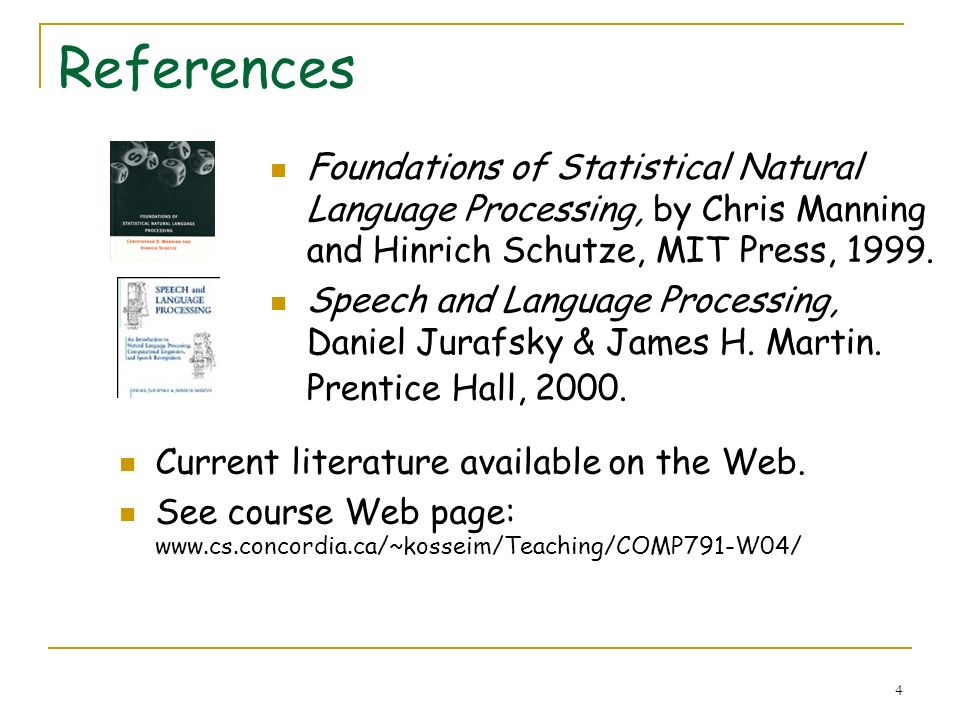Jurafsky Martin Speech Language Processing 2nd Edition
Synopsis • An explosion of Web-based language techniques, merging of distinct fields, availability of phone-based dialogue systems, and much more make this an exciting time in speech and language processing. The first of its kind to thoroughly cover language technology at all levels and with all modern technologies this book takes an empirical approach to the subject, based on applying statistical and other machine-learning algorithms to large corporations. Builds each chapter around one or more worked examples demonstrating the main idea of the chapter, usingthe examples to illustrate the relative strengths and weaknesses of various approaches. Adds coverage of statistical sequence labeling, information extraction, question answering and summarization, advanced topics in speech recognition, speech synthesis. Revises coverage of language modeling, formal grammars, statistical parsing, machine translation, and dialog processing. A useful reference for professionals in any of the areas of speech and language processing.' • For undergraduate or advanced undergraduate courses in Classical Natural Language Processing, Statistical Natural Language Processing, Speech Recognition, Computational Linguistics, and Human Language Processing.

An explosion of Web-based language techniques, merging of distinct fields, availability of phone-based dialogue systems, and much more make this an exciting time in speech and language processing. The first of its kind to thoroughly cover language technology at all levels and with all modern technologies this text takes an empirical approach to the subject, based on applying statistical and other machine-learning algorithms to large corporations. The authors cover areas that traditionally are taught in different courses, to describe a unified vision of speech and language processing. Emphasis is on practical applications and scientific evaluation. An accompanying Website contains teaching materials for instructors, with pointers to language processing resources on the Web. The Second Edition offers a significant amount of new and extended material. Gramatica William Cereja Branca.
Supplements: Click on the 'Resources' tab to View Downloadable Files: Solutions Power Point Lecture Slides - Chapters 1-5, 8-10, 12-13and 24 Now Available For additional resourcse visit the author website: http: //www.cs.colorado.edu/ martin/slp.html '.
This book offers a unified vision of speech and language processing, presenting state-of-the-art algorithms and techniques for both speech and text-based processing of natural language. This comprehensive work covers both statistical and symbolic approaches to language processing; it shows how they can be applied to important tasks such as speech recognition, spelling and This book offers a unified vision of speech and language processing, presenting state-of-the-art algorithms and techniques for both speech and text-based processing of natural language. This comprehensive work covers both statistical and symbolic approaches to language processing; it shows how they can be applied to important tasks such as speech recognition, spelling and grammar correction, information extraction, search engines, machine translation, and the creation of spoken-language dialog agents. The following distinguishing features make the text both an introduction to the field and an advanced reference guide. - UNIFIED AND COMPREHENSIVE COVERAGE OF THE FIELD Covers the fundamental algorithms of each field, whether proposed for spoken or written language, whether logical or statistical in origin. - EMPHASIS ON WEB AND OTHER PRACTICAL APPLICATIONS Gives readers an understanding of how language-related algorithms can be applied to important real-world problems. - EMPHASIS ON SCIENTIFIC EVALUATION Offers a description of how systems are evaluated with each problem domain.
Dan Jurafsky and James H. Martin “Speech and language processing: an introduction to natural language processing, computational linguistics, and speech. Mediator 9 Crack Serial. Jurafsky & Martin - Chapter 3 - Words and Transducers. A good place to start, before moving on to Taylor's book for a more in-depth treatment of this topic. SPEECH and LANGUAGE PROCESSING An Introduction to Natural Language Processing, Computational Linguistics, and Speech Recognition Second Edition by Daniel Jurafsky and James H. Martin Last Update January 6, 2009: The 2nd edition is now avaiable. A million thanks to everyone who sent us corrections and suggestions.
- EMPERICIST/STATISTICAL/MACHINE LEARNING APPROACHES TO LANGUAGE PROCESSING Covers all the new statistical approaches, while still completely covering the earlier more structured and rule-based methods. Jurafsky provides a solid foundational knowledge for computational linguistic - it introduces linguistics, computer science and statistics at comprehensive depth. Some of the major concepts for anybody who wants to know about computational linguistic. Language Model: the book introduces basic models and algorithms evolved around linguistics.